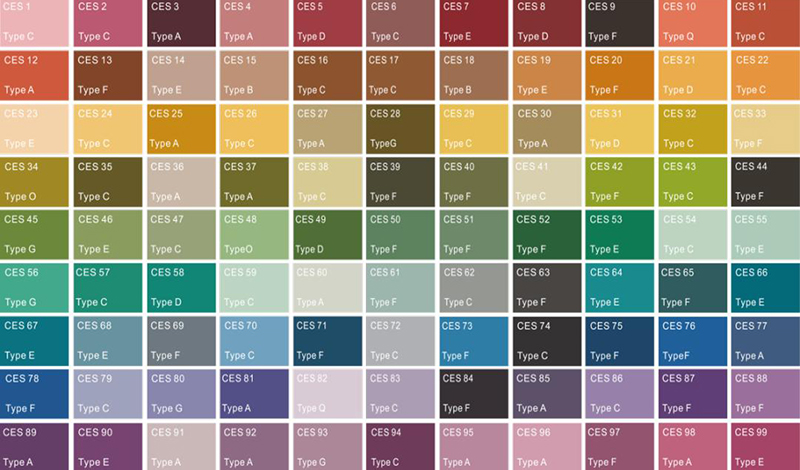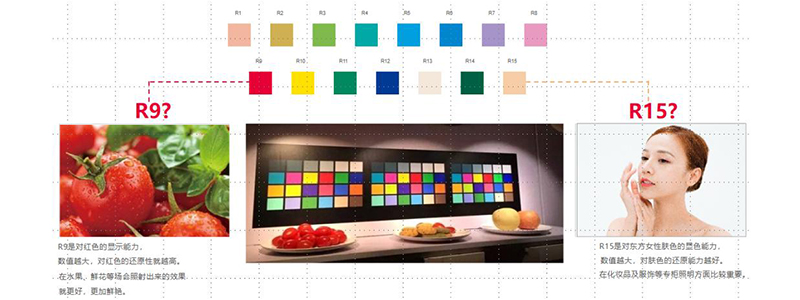LED iðnaður er innlend stefnumótandi vaxandi iðnaður og LED ljósgjafinn er efnilegasti nýi ljósgjafinn á 21. öldinni, en vegna þess að LED tækni er enn á þróunarstigi stöðugs þroska hefur iðnaðurinn enn margar spurningar um ljósgæði þess einkenni, þessi grein mun sameina kenningu og iðkun, greina núverandi stöðu LED og framtíðarþróunarstefnu, stuðla að heilbrigðri þróun LED iðnaðarins.
Þróunarstaða LED iðnaðarins og þróun
a. Frá sjónarhóli vöruferlisins hefur LED lýsing farið í mjög þroskað tímabil.
Sem stendur er LED lýsing, hvort sem er í útilýsingu eða viðskiptalýsingu, að komast í gegn á ógnarhraða.
En á þessu stigi er hægt að lýsa innlendu ljósumhverfinu sem blönduðum poka, lággæða LED lýsingarvörur sjást alls staðar. LED lýsing er enn föst í orkusparnaði, umhverfisvernd og löngum líftíma lampanna. Þess vegna leiðir þetta einnig til þess að flestir LED ljósaframleiðendur sækjast eftir mikilli birtuskilvirkni og samkeppni með litlum tilkostnaði, en hunsa LED fyrir heilsu og þægindi manna og greindar lýsingarþætti á hærra stigi forrita.
b.Hvar er framtíðarstefna LED iðnaðarins?
Ljóshagkvæmni mun halda áfram að ýta undir tækninýjungar, sem er óumflýjanlegt ferli vöruþróunar, á tímum LED-ljósa, vegna þess að ljósgjafinn hefur margs konar mýkt, leitin að ljósgæði er einnig að batna.
Frá heildarsjónarhorni er LED iðnaðurinn nú á hægu þróunarstigi, það er engin tækninýjung sem leiðir til þess að iðnaðurinn sem tekur þátt í verðstríðinu, í verðstríðinu sífellt hvítari, þvingar markaðinn til gæða, greindar og annarra leiðbeiningar.
Hvað er „létt“ með gæðum?
Áður fyrr voru LED lampar sem eru bjartir, stöðugir birtuskilvirkni osfrv., gæða lampi. Nú á dögum, með hugmyndinni um græna lýsingu og djúpar rætur í hjörtum fólks, hefur staðall skilgreiningar á framúrskarandi ljósgæði breyst.
a. Stigið að vinna eftir magni er liðið og tíminn að vinna eftir gæðum er runninn upp.
Þegar við þjónum Norður-Ameríku viðskiptavinum komumst við að því að kröfur þeirra um gæði LED ljóss verða sífellt hærri. Lýsingarnefnd Norður-Ameríku IES hefur skýrt nýja matsaðferð TM-30 fyrir litaflutningsgetu ljósgjafa og lagt til tvær nýjar prófunarvísitölur Rf og Rg, sem gefa fullkomlega til kynna að alþjóðlegir hliðstæðar ýti undir ljósrannsóknir á LED. Blue King mun fljótt kynna slíkar matsaðferðir í Kína, svo að fólkið í Kína geti notið hágæða LED ljósgjafa að fullu.
TM-30 ber saman 99 litasýni, sem tákna ýmsa algenga liti sem sjást í lífinu (frá mettuðum til ómettuðum, frá ljósum til dökkum)
TM-30 litamælingartöflu
b.Aðeins leit að ljósgæða LED lýsingu getur veitt notendum þægindi.
Hágæða LED lýsingarvörur vegna áherslu á heilsu, hár skjár, raunhæf lýsingaráhrif, fyrir mismunandi vörur að velja réttan litahitastig og lampar til að hafa glampavarnarkröfur, stjórna hættu á yfirfalli bláa ljóssins, með snjöllum kerfum fyrir ljósastýringu, til að mæta ríkum og fjölbreyttum greindarstýringarþörfum.
c.LED ljós rotnun
Ólíkt hefðbundnum ljósabúnaði sem er hætt við skyndilegri bilun til að halda áfram að virka, bila LED lampar venjulega ekki skyndilega. Með LED vinnutíma verður ljós rotnun. LM-80 próf er aðferð og vísir til að meta viðhaldshraða holrúms LED ljósgjafa.
Í gegnum LM-80 skýrsluna geturðu spáð fyrir um endingu ljósdíóðunnar, í IES LM-80-08 staðlaða, metna viðhaldslíftíma; L70 (klukkutímar): gefur til kynna að ljósgjafarholið hnigni niður í 70% af upphaflega notkunartímanum; L90 (klukkutímar): gefur til kynna að ljósgjafalúmenin rýrna niður í 90% af upphaflegum lumens sem notuð eru.
d.High litaflutningsvísitala
Litaflutningsstuðull er mikilvæg aðferð til að meta litaendurgjöf ljósgjafa og er einnig mikilvægur breytu til að mæla litareiginleika gerviljósgjafa, gefið upp með Ra/CRI.
Ra,R9 og R15
Almenni litaflutningsstuðullinn Ra er meðaltal R1 til R8 og litaflutningsstuðull CRI er meðaltal RI-R14. Við lítum ekki aðeins á almenna litaflutningsvísitöluna Ra, heldur tökum einnig eftir sérstökum litaflutningsvísitölu R9 fyrir mettaðan rauðan, og sérstaka litaflutningsvísitöluna R9-R12 fyrir rauða, gula, græna og bláa mettaða liti, við teljum að þessir litir. Vísar tákna í raun gæða LED ljósgjafa, og fyrir ljósgjafa í atvinnuskyni, aðeins þegar þessir vísar hafa hátt gildi geta tryggt mikla litaendurgjöf LED.
Venjulega, því hærra sem gildið er, því nær lit sólarljóssins, því nær upprunalega litnum er hluturinn sem lýst er upp. LED ljósgjafar með háum litaflutningsvísitölu eru venjulega valdir í ljósaiðnaðinum. Vörurnar sem Blue View býður upp á samþykkja venjulega CRI>95 í samræmi við eftirspurn viðskiptavinarins, sem getur sannarlega endurheimt lit vörunnar í lýsingunni, til að gleðja augað og örva verslunarlöngun fólks.
e.Töfrandi ljós
Árið 1984 skilgreindi Illuminating Engineering Society of North America glampi sem tilfinningu fyrir gremju, óþægindum eða tapi á sjónrænni frammistöðu í sjónsviðinu af völdum lýsingar sem er miklu meiri en augað getur aðlagast. Samkvæmt afleiðingum má skipta glampi í óþægindaglampa, ljóslagað glampa og útfararglampa.
LED er mikill fjöldi sívalur eða kúlulaga pakka, vegna hlutverks kúptar linsu, hefur það sterkan vísi, ljósstyrk með mismunandi lögun pakkans og styrkleika sem fer eftir hornstefnunni: staðsett í eðlilegri átt hámarks ljósstyrks, skurðhornið við lárétta planið fyrir 90. þegar vikið er frá eðlilegri stefnu mismunandi θ horns breytist ljósstyrkur einnig. einkenni punktljósgjafa LED. Þannig að eiginleikar LED ljósgjafa hafa of mikla birtustig og glampi vandamál koma upp. Í samanburði við glóperur, flúrperur, háþrýstinatríumperur og aðrar hefðbundnar lampar, er ljósleiðarastefna LED lampa of einbeitt og hætt við að framleiða óþægilega glampa.
f.Bláljósahættur
Með vinsældum LED, hefur LED blátt ljós hætta eða bláu ljós leki orðið vandamál sem allir menn þurfa að horfast í augu við og leysa, og í ljósaiðnaðinum er engin undantekning.
Nýi almenni ESB-armastaðallinn kveður á um að ef ljósabúnaður sem inniheldur LED, málmhalíðperur og sumar sérstakar wolfram halógenperur sem ekki er hægt að undanþiggja frá hættumati á sjónhimnu skuli metinn samkvæmt IEC/EN62778:2012 „Ljósfræðilegt öryggi ljósgjafa og ljósgjafa fyrir umsóknir um meiðsli með bláu ljósi“ og ekki er rétt að nota ljósgjafa með bláljósahættuhópum sem eru stærri en RG2.
Í framtíðinni munum við sjá fleiri og fleiri fyrirtæki, ekki aðeins framleiða LED lýsingarvörur, og ekki einbeita okkur að einstökum breytum vörunnar, heldur getum við hugsað um hvernig á að bæta gæði ljóssins byggt á virðiskeðjunni frá framleiðslu til alls. framkvæmd eftirspurnar. Í uppfærsluferlinu er lýsingarhönnunargeta, aðlögunargeta vöru, svo og stofnun og endurbætur á hraðsvörunargetu, áskorunin sem fyrirtæki verða að standa frammi fyrir.
Pósttími: Nóv-09-2022







